The Ultimate Guide to PPC Marketing
Pay-per-click (PPC) marketing is an incredibly effective tool. Whether you’re a small business owner looking to attract local customers or a large corporation aiming to increase your online presence, PPC can deliver measurable results and more.
PPC advertising is a popular marketing tactic that can drive measurable traffic, generate leads, and increase revenue. In order to help get the most out of PPC advertising, businesses need to maximize their return on investment (ROI). This blog will explore strategies to help businesses achieve the best ROI with PPC advertising. Here’s what you need to know.
What is PPC Marketing?
Pay-per-click advertising is a form of online marketing where advertisers pay each time their ad is clicked. Ads are displayed on various platforms, including search engines, social media, and other websites. Remarkably, 93% of all online experiences begin with a search engine, most commonly Google. The cost per click (CPC) varies depending on the platform and the competition for the targeted keywords. Advertisers bid for the keywords they want to target, and the highest bidder displays their ad. Let’s take a deeper look at how PPC marketing can be beneficial.
Understanding Key Benefits of PPC Marketing
PPC is important because pay-per-click advertising allows real-time control over your ad spend, targeting, and copy. With greater control in real-time, businesses can optimize ad performance to improve returns. Understanding why PPC marketing is beneficial is the first step toward utilizing it effectively. Here are some key reasons:
- Targeted Advertising: PPC allows you to reach your exact audience. You can target ads based on keywords, location, demographics, time of day, and device type.
- Cost Control: With PPC, you only pay when someone clicks on your ad. This means you can manage your budget effectively, setting maximum daily or monthly ad spend limits.
- Measurable Results: PPC campaigns provide detailed metrics that allow you to measure the success of your ads. You can track clicks, impressions, and conversions to understand what works and what doesn’t.
- Quick Entry: Unlike organic search engine optimization (SEO), PPC campaigns can be set up and run within a few hours. This can help you drive traffic to your site almost immediately.
Getting Started with PPC
Starting a PPC campaign can seem daunting, but breaking it down into manageable steps can simplify the process. To launch a PPC campaign, you’ll have to set up an account in Google Ads. Once that’s done, you can start drawing up a target keyword list. Here’s how you can begin:
- Keyword Research: The foundation of any successful PPC campaign is thorough keyword research. Use tools like Google Keyword Planner to find relevant keywords for which your target audience is searching. Consider each keyword’s search volume, competition, and cost per click.
- Setting Up Your Account: Create accounts on major PPC platforms like Google Ads and Bing Ads. These platforms offer comprehensive guides and tools to help you set up campaigns.
- Creating Compelling Ads: Write clear, relevant, and compelling ads. Your ad copy should include a strong call to action (CTA) and highlight your product or service’s unique selling points (USPs).
- Landing Page Optimization: Ensure that the landing page your ad directs to is optimized for conversions. It should be relevant to the ad, load quickly, and include a clear CTA.
Advanced PPC Strategies
To maximize ROI with PPC advertising, continuously test and optimize your campaigns. Once you’ve set up your initial campaigns, it’s time to explore advanced strategies to enhance your PPC performance:
- A/B Testing: Regularly test different versions of your ads to see which ones perform better. This can include testing headlines, ad copy, and images.
- Remarketing: Target visitors who have previously interacted with your site but did not convert. Remarketing helps keep your brand at the top of your mind and encourages users to return and complete their purchases.
- Bid Adjustments: Use bid adjustments to increase or decrease bids based on the performance of different segments. For example, you might bid higher for mobile users if they convert more often than desktop users.
- Ad Extensions: Use ad extensions to include additional information like phone numbers, links to specific pages, and product images. Ad extensions can improve your ad’s visibility and click-through rate (CTR).
Measuring and Optimizing Your Campaigns
Effective PPC marketing involves continuous monitoring and optimization. Here’s how to keep your campaigns on track:
- Monitor Key Metrics: Regularly review key performance indicators (KPIs) such as CTR, cost per conversion, and return on ad spend (ROAS). This will help you understand how your campaigns perform and where you can improve.
- Use Analytics Tools: Utilize tools like Google Analytics to gain deeper insights into your campaign performance. Track user behavior on your site to understand the customer journey and identify areas for improvement.
- Continuous Optimization: PPC is not a set-it-and-forget-it strategy. Continuously optimize your campaigns based on performance data. This includes adjusting bids, refining keywords, and improving ad copy.
Final Thoughts
PPC advertising can be a powerful business tool to drive traffic, leads, and revenue. By understanding these strategies to maximize your ROI, you can create effective campaigns that deliver measurable results. Considering PPC’s benefits, there’s little risk in testing it out to see where it can move the needle and gather valuable data to inform your other marketing and optimization efforts.
If you have not incorporated PPC advertising into your marketing strategy, it is time to learn more and get in the game. At Onimod Global, we can help you optimize your PPC advertising and explore untapped opportunities in lead generation. Start your PPC journey today and unlock the full potential of your online advertising efforts.
Contact us today to learn more about our PPC advertising services.

